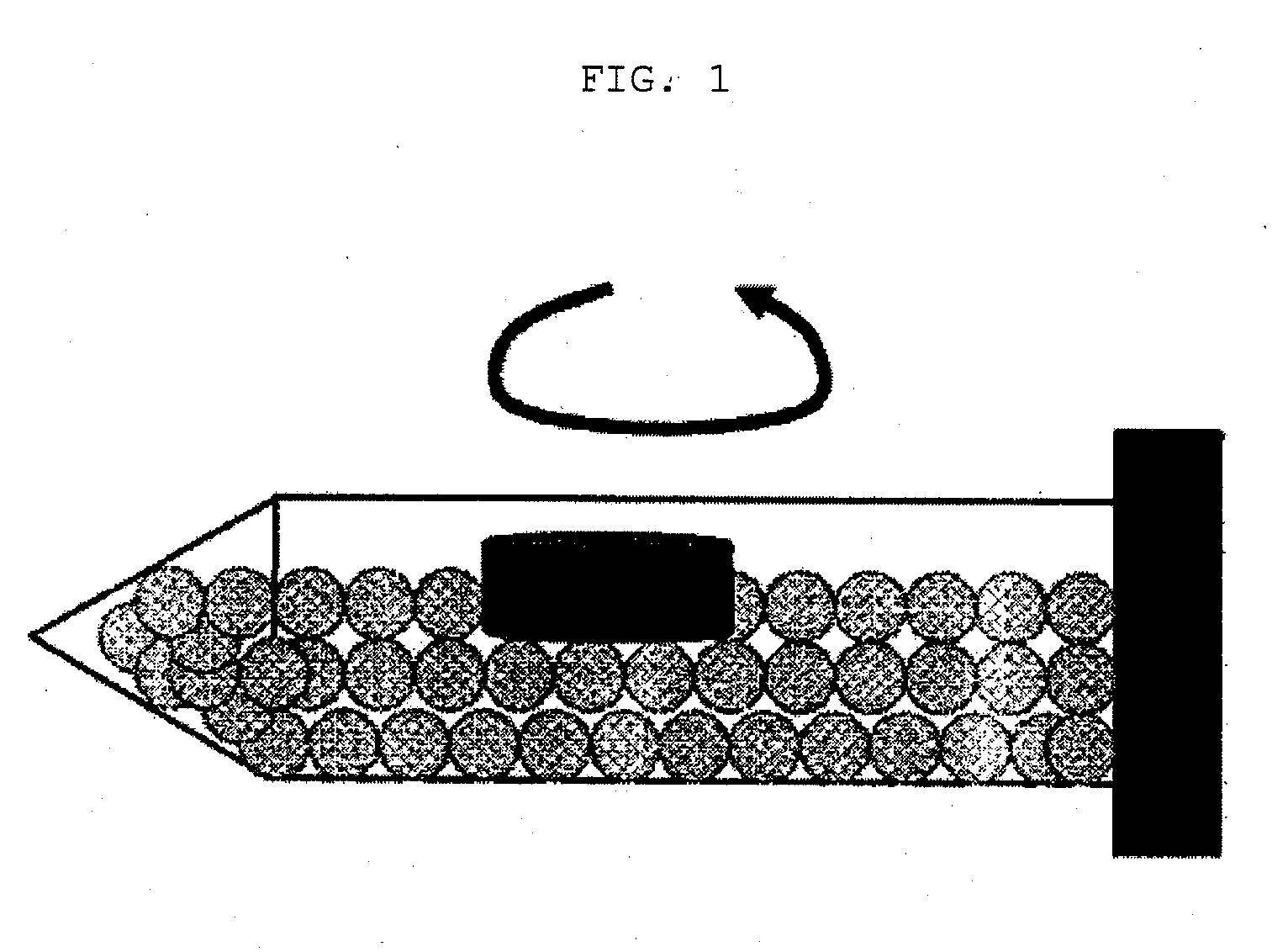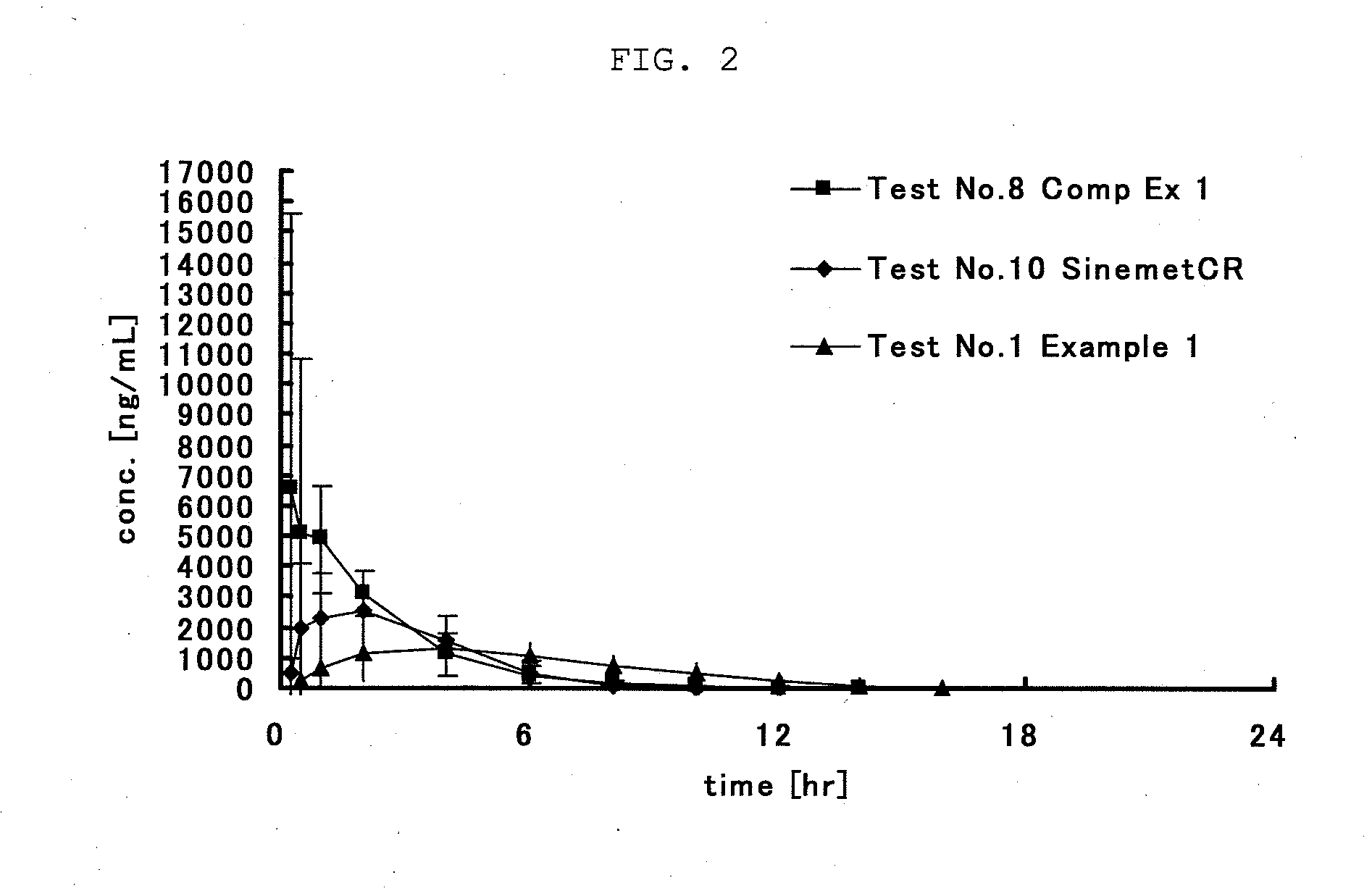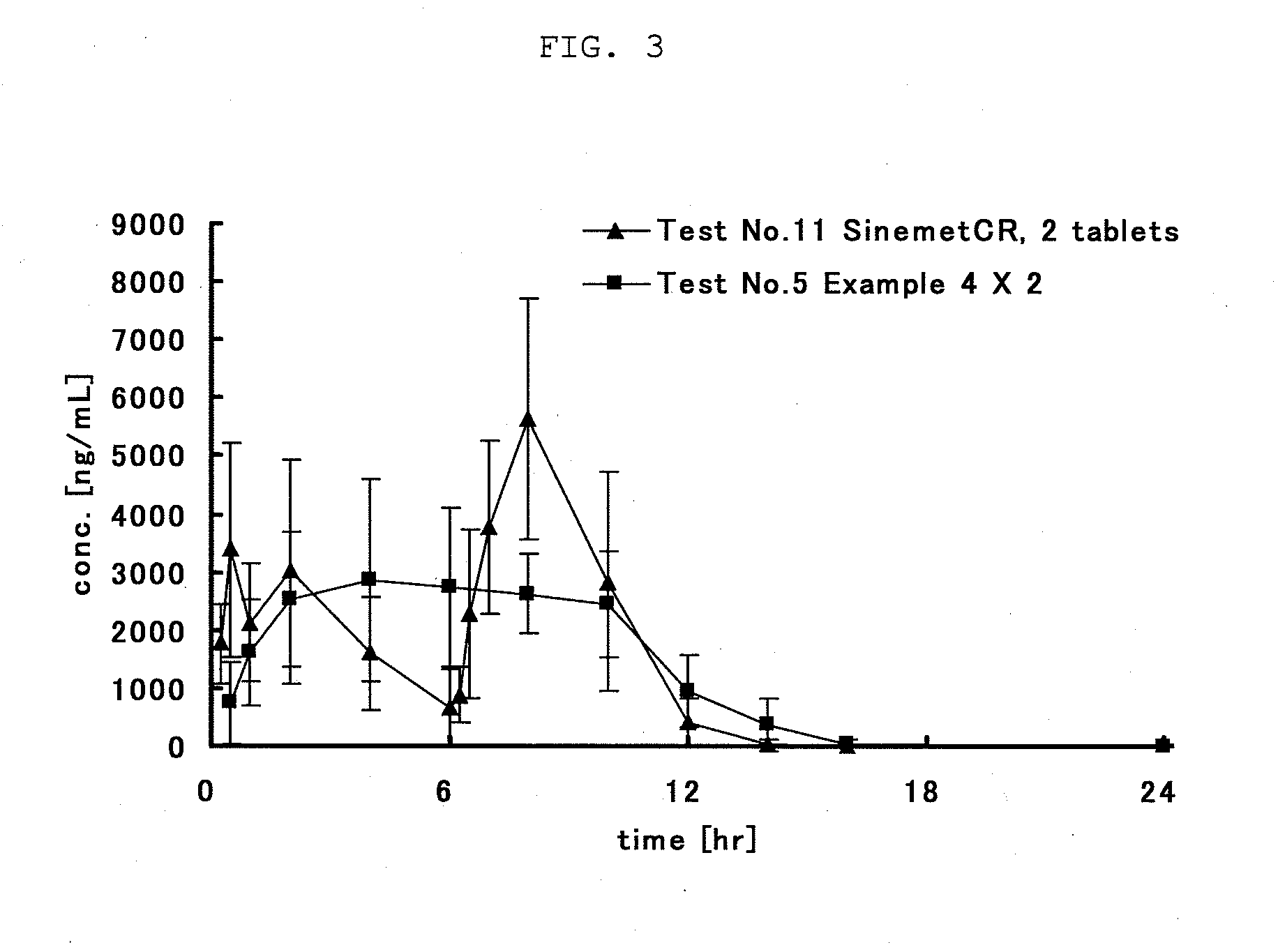Gastric retention-type sustained-release levodopa preparation
a levodopa and gastric retention technology, applied in the direction of biocide, drug composition, peptide/protein ingredients, etc., can solve the problems of drug effect often dropping, on-off phenomenon, and wear-off phenomenon, and achieve the effect of reducing the effect of the drug and gradually unstabl
- Summary
- Abstract
- Description
- Claims
- Application Information
AI Technical Summary
Benefits of technology
Problems solved by technology
Method used
Image
Examples
reference example 1
[0090]Furosemide (1250 mg), hydroxypropyl methyl cellulose 2208 (Metolose 90SH 4000SR, 3250 mg) and hydroxypropyl cellulose (HPC-M fine powder, 500 mg) were mixed together in a mortar to prepare a composition for the drug releasing layer. Separately, hydroxypropyl methyl cellulose acetate succinate (Shin-Etsu AQOAT AS-MF, 800 mg), hydroxypropyl cellulose (HPC-M fine powder, 200 mg) and yellow ferric oxide (5 mg) were mixed together in a mortar to prepare a composition for the gastric resident layer. The composition for the drug releasing layer and the composition for the gastric resident layer were loaded into a tableting machine (N-30E, Okada Seiko Co., Ltd.; hereinafter, the same machine will be used) in this order and the compositions were compressed into a tablet at a punch pressure of about 10 kN, using a circular die and punch measuring 8 mm in diameter. As a result, flat circular tablets of gastric retentive preparation having a diameter of 8 mm were prepared, each containing...
reference example 2
[0094]According to Reference Example 1, flat circular tablets of gastric retentive preparation having a diameter of 8 mm were prepared, each containing: furosemide (50 mg), hydroxypropyl methyl cellulose 2208 (Metolose 90SH 4000SR, 130 mg) and hydroxypropyl cellulose (20 mg) for the drug releasing layer; and hydroxypropyl methyl cellulose acetate succinate (70 mg), lactose (30 mg) and yellow ferric oxide (0.5 mg) for the gastric resident layer.
(Dissolution Test)
[0095]Small diameter (JP first fluid): 8.42 mm
Dissolution time (JP second fluid): 1.0 hour
(Strength Test)
[0096]Small diameter (JP first fluid): 8.23 mm, maximum load: >10000 g
(Confirmation Test for Gastric Residence Time)
[0097]Gastric residence time: 16 hours
reference example 3
[0098]According to Reference Example 1, flat circular tablets of gastric retentive preparation having a diameter of 8 mm were prepared, each containing: furosemide (50 mg), hydroxypropyl methyl cellulose 2208 (Metolose 90SH 4000SR, 130 mg) and hydroxypropyl cellulose (20 mg) for the drug releasing layer; and methacrylic acid-ethyl acrylate copolymer (Eudragit L100-55, 80 mg), hydroxypropyl cellulose (20 mg) and yellow ferric oxide (0.5 mg) for the gastric resident layer.
(Dissolution Test)
[0099]Small diameter (JP first fluid): 9.32 mm
Dissolution time (JP second fluid): 3.0 hours
(Strength Test)
[0100]Small diameter (JP first fluid): 9.23 mm, maximum load: >10000 g
(Confirmation Test for Gastric Residence Time)
[0101]Gastric residence time: 16 hours
PUM
 Login to View More
Login to View More Abstract
Description
Claims
Application Information
 Login to View More
Login to View More - R&D
- Intellectual Property
- Life Sciences
- Materials
- Tech Scout
- Unparalleled Data Quality
- Higher Quality Content
- 60% Fewer Hallucinations
Browse by: Latest US Patents, China's latest patents, Technical Efficacy Thesaurus, Application Domain, Technology Topic, Popular Technical Reports.
© 2025 PatSnap. All rights reserved.Legal|Privacy policy|Modern Slavery Act Transparency Statement|Sitemap|About US| Contact US: help@patsnap.com



